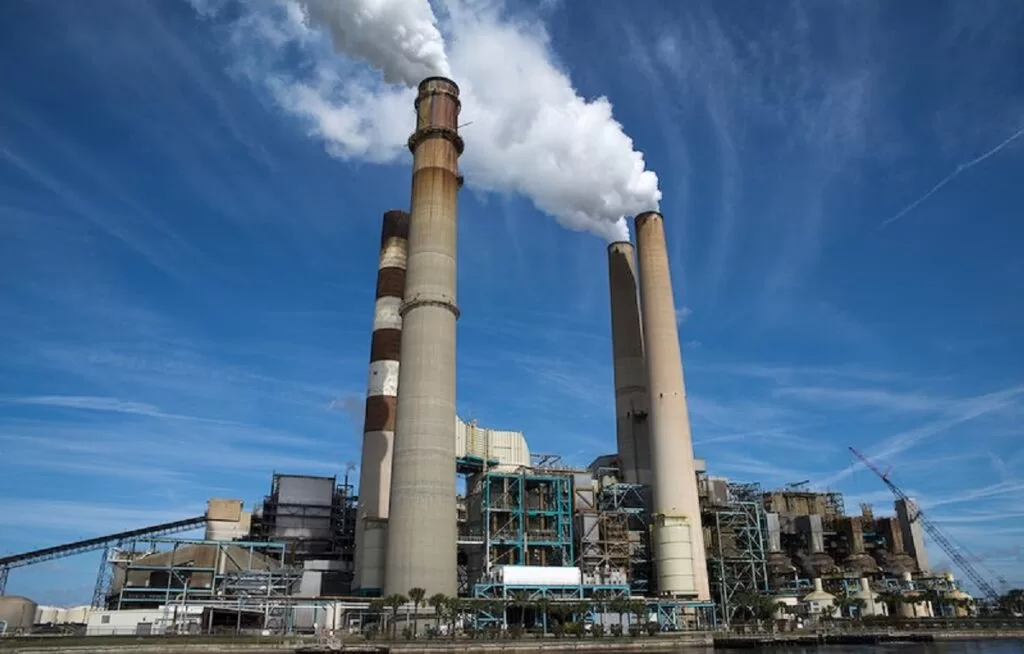Guest post by Olivia Chang.
As the narrative around the climate crisis has shifted from a debate over its existence to one where polluters claim they are meaningfully committed to climate action, it can be difficult to distinguish between real solutions and greenwashing.
The Hawaii State Energy Office (HSEO) decarbonization report models three scenarios in which the state reaches its goals of 50% reduction in GHG by 2030 and net zero by 2045. Scenario 1 achieves emissions reductions through “widespread electrification and fuel switching”, and “large scale land-based mitigations”. Scenario 2 “layers on additional demand reductions in buildings and transportation relative to S1”, including a 10% reduction in flight miles by 2030 [1].
In Scenario 3, however, Hawaii fails to implement widespread demand reductions and land-based mitigations. Yet the report states that Hawaii could still close the gap by using direct air capture, a type of carbon capture that is meant to pull carbon dioxide out of open air.
Direct air capture systems use fans to push air over either a liquid solvent or solid sorbent that absorbs CO2. A large amount of energy is used to then release the CO2 and regenerate the sorbents. This process is extremely energy intensive and costly because CO2 in open air is very diffuse in the atmosphere, with a concentration of about 0.04%.
Both HSEO and HECO’s decarbonization reports model their theoretical direct air capture on the Climeworks’ Orca plant in Iceland, the largest direct air capture plant in the world [2]. Orca uses 8000 MWh of energy to remove just 4,000 tons of CO2 per year. To put that in perspective:
- Hawaii emitted approximately 4,214 tons of CO2 a day in 2019 [3]. The Climeworks plant captures less CO2 in a whole year than Hawaii emits in a single day.
- Kalaeloa Renewable Energy Park generated 7,812 MWh in 2020. Powering just one Climeworks facility would require more than the entire capacity of a utility-scale solar project.
Scenario 3 assumes Hawaii will be able to capture and sequester 500,000 metric tons of carbon dioxide per year by 2045, or the equivalent of 125 Orca facilities. Orca is enormously energy intensive—each ton of CO2 captured by Orca requires 2,000 kWh of energy. At Orca’s current electricity demand, sequestering just 500,000 tons of CO2 would take 1,000 GWh of energy, or nearly a tenth of Hawaii’s entire electricity demand [4].
If a proposed Orca plant is powered with current Hawaii grid-standard electricity, generating the electricity required to sequester 1 ton of CO2 would itself emit 1.26 tons of CO2 [5]. In other words, powering an Orca plant in Hawaii would currently emit more carbon than it sequesters.
Of course, HSEO’s report assumes the electricity required to power direct air capture will come entirely from off-grid solar or wind, and Hawaii has a target of 0 CO2e/MWh of emissions intensity by 2045. This raises two questions: where will that 1,000 GWh of off-grid solar and wind power come from? Moreover, why build out a massive amount of clean energy capacity in order to continue burning fossil fuels, when we could have just put that renewable energy in the grid in the first place?
A 2021 study estimates that each ton of CO2 sequestered by direct air capture requires 4 cubic meters—1056.8 gallons—of fresh water6. Sequestering 500,000 metric tons of carbon dioxide would thus require 528 million gallons of water. That’s more water than the entire state of Hawaii consumes each day, or 0.3% of Hawaii’s entire water consumption. As the HSEO report notes, given the current water crisis and drought conditions, direct air capture using freshwater would be “impracticable”.
Current direct air capture costs range from $600-1000 per ton CO2; Climeworks is on the lower end of that spectrum with costs ranging from $500-600 per ton CO2. For reference, that is more than 50 times the cost of most natural sequestration solutions. The federal 45Q tax credit, expanded in the IRA, pays up to $180 per metric ton of captured and sequestered CO2. To make direct air capture profitable, Hawaii taxpayers will have to massively subsidize the carbon capture industry, on top of already significant federal tax incentives.
One could take the carbon capture industry at their word that technological advancements might eventually lower the price of direct air capture to $100 per ton of CO2 (a promise that is currently the subject of great dispute). But would it not be far cheaper to avoid putting the carbon in the atmosphere in the first place, using the solutions we have now? Global warming is cumulative: preventing emissions now, while we have not yet exceeded our carbon budget, is far more effective than trying to extract those emissions from the atmosphere in the future.
Putting aside the enormous cost, energy and resource intensity, and inability to meaningfully address emissions, there remain other obstacles to large-scale adoption of direct air capture. Similar to how wastewater disposal from fracking has induced earthquakes in Oklahoma, CO2 injection results in increased risk for seismic activity. CO2 leakage, either back into the atmosphere or into groundwater drinking sources, is a significant concern. And direct air capture solutions produce toxic byproducts such as chlorine gas and chemical carcinogens for which there are no sustainable or economical disposal solutions.
Many climate groups see direct air capture as a delay tactic, employed by polluting industries to avoid the hard truth that their businesses are fundamentally incompatible with avoiding catastrophic climate change. Indeed, the vast majority of carbon captured in the United States is used to inject the captured CO2 into underground deposits to extract more fossil fuels. Investing in R&D for what they call silver-bullet technologies allows fossil fuel companies to claim that they are doing their part to combat climate change (even as they continue to expand new fossil fuel production, against IEA’s absolute deadline issued three years ago that no new fossil fuel infrastructure can be built if the world is to stay under 1.5C of warming).
In Hawaii, carbon capture is a dangerous distraction from the hard work of deploying solutions—not just technological, but social—that we have now. The HSEO report writes that direct air capture is needed for the hard-to-decarbonize sectors, aviation being the primary culprit. Currently, no technology—including alternative jet fuels—can decarbonize aviation at the pace and scale we need. Yet the prospect of direct air capture lends industry the social license to continue growing, and polluting. Why make the demand reductions called for by Scenario 2 when we’ll just rely on future advancements in direct air capture to fix the mistakes we’re making now?
The good news is we do not have to make those mistakes. We have the real solutions in front of us, waiting to be deployed.
This isn’t to say that direct air capture will never progress technologically—we might see improvements that lower its cost and energy intensity. We might see saltwater replace freshwater as a possible input to dissolve CO2, as the report hopes. We might figure out how to minimize the risk of induced earthquakes from sequestration. We might discover a new endless source of energy that allows us to power the 1000 GWh needed for direct air capture.
Or we might not. And betting on technological advancements that do not yet exist—when no less than our futures are at stake, and failure means irreversible climate catastrophe—is not a bet I’m willing to take.
Olivia is an intern at Life of the Land and a fossil fuel divestment organizer at Olin College.
[1] This is achieved by extending the average visitor’s trip length from 9 days to 10 days.
[2] The HSEO report also includes projected carbon capture abilities from two facilities that have not yet finished construction—Mammoth in Iceland and Project Bison in Wyoming.
[3] The last year for which the inventory GHG emissions data are available.
[4] According to the report, Hawaii consumed approximately 10,000 GWh of energy in 2019.
[5] Current GHG intensity according to HECO is 0.00585 tons of CO2e emitted for each kWh produced, excluding biogenic CO2. Using numbers from 2022.

